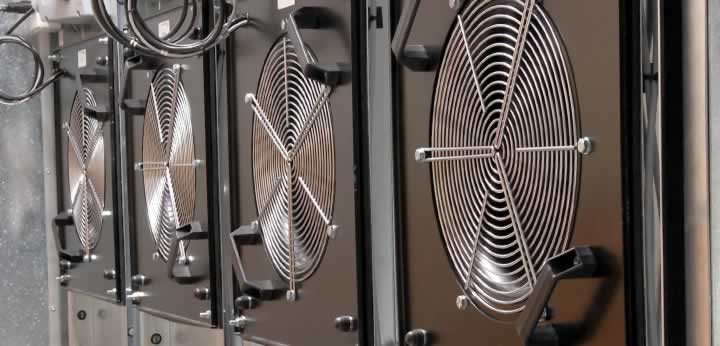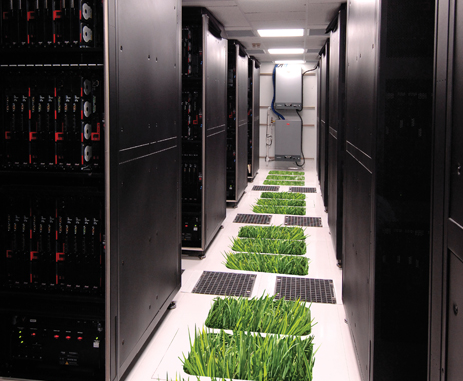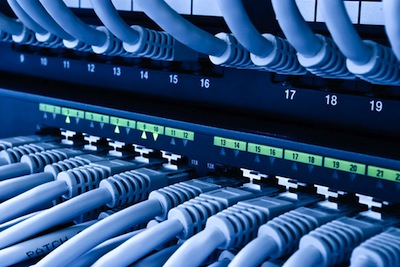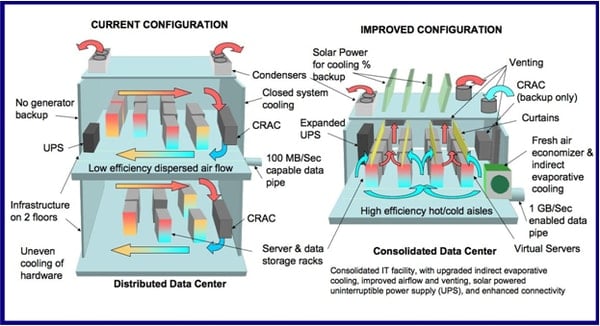
Leaders: Don’t Be Afraid of Your Emotions
May 23, 2016
How to Protect Your Company’s Financial Infrastructure from Cyber Crimes
May 24, 2016With concerns around the conservation of the environment, global warming and increased CO2 emissions, green technologies are seeing tremendous growth in research, interest and uptake. Just like how green buildings came in the spotlight a few years back with the IGBC rating, the concept of Green data centers is gaining momentum. Being green is particularly relevant to data centers given that they consume enormous amounts of power and also increase heat emissions in the surrounding area.
The Basics
A green data center is a data center where all the systems, be it electrical, mechanical or computing systems, have been designed specifically for minimum energy consumption and minimum environmental impact. Just like in the case of green buildings, the design for “green”, the use of more expensive materials/technologies and the preparatory work needed to get certified – all significantly add to the cost of construction.

However, in the long run, you realize significant cost savings on recurring operational and maintenance expenses. Add in advantages that come with a workplace that is healthier and more comfortable for employees and how it contributes to corporate social responsibility requirements, and you can quickly see that green data centers more than pay themselves back over the years.
What Are the Key Elements of a Green Data Center?
These are some key design elements of a green data center:
- Buildings with the minimum footprint possible
The goal here is to have buildings that satisfy all functional need while being least sprawling. Sprawling buildings not only have higher cooling costs, they also have more areas exposed to the sun which increases cooling loads and cooling costs.
- Sustainable Landscaping
The landscaping around a green data center is designed so as to be as nature-friendly low-emission and low-energy consumption as possible. Many of the elements making up sustainable landscaping are already seen in the design of green buildings. These include grey water recycling which utilizes recycled water sources and water consumption, use of shrubs and trees that consume less water, the use of bio-fertilisers and bio-pesticides instead of chemical pesticides and fertilisers to maintain the landscaping
- Use of low-emission construction materials
Several materials including special-purpose concrete and specialty paints are used which have low carbon footprint (Both in terms of the footprint from the manufacturing process and CO2 emissions from the material itself)
- Has infrastructure for segregation and recycling of waste, and possibly waste-wealth power plants
Waste segregation and recycling is an integral part of a green data center setup just like for a green building. E-waste forms an important part of waste generated by a data-center and a specific e-waste handling process is generally put in place to handle it.

The primary problem with e-waste is from the presence of heavy metals which increased the risk of poisoning water-bodies and landfills which can lead to toxicity in the entire food-chain. Proper handling of e-waste including PCB’s, plastic shells, monitors and CRT’s, LCD display units and plastic power cords are absolutely critical to the operation of a data-center on a green basis.
- Emissions control at backup generators by the use of catalytic converters
The design put in place is very similar to what is utilized in automobiles – the catalytic converter absorbs the gaseous emissions and converts into alternate harmless products
- The use of hybrid vehicles or karts within the building campus
Hybrid and electric vehicles are green because they permit more efficient handling of emissions at source (The power plant)
- Maximum use of alternate energy sources such as solar and energy-efficient cooling/air-conditioning
Data-Center Infrastructure Management
Data-center infrastructure management takes a holistic and comprehensive approach to the operation of data-centers, bringing together elements of data-center design, asset management, server capacity planning and energy-efficiency.

Accurate capacity planning helps to reduce requirements for hardware and the associated cooling, power and maintenance costs.
Energy Efficient Cooling
Energy costs can make up to 60% of the operating costs of a data-center and cooling costs make up among the largest components of energy costs. Free-air cooling systems make up an important part of green data centers. Unlike conventional mechanical/electrical cooling systems, these cooling systems use outside air which is passed through filters and dehumidifiers before being pumped into the data-center.
In most parts of the developed world, outside air is available at 27 degrees Celicius or lower for most months in a year, meaning that there’s no real need to use mechanical/electrical cooling systems for a significant part of the year. Systems can be designed in such a manner that water-cooling can be used to reduce the temperature of the incoming air even during summers completely obviating the need for a conventional cooling system. By using energy-efficient cooling systems, green data centers achieve considerable savings in energy costs.
Low-Power Server Technology
One of the hottest areas in server-side computing is the development of low-power servers. These servers come with hardware designed from the ground-up for low-power consumption. With servers continually becoming smaller in footprint and delivering increasing amounts of storage and CPU at smaller sizes, energy consumption by servers is already going down.

Photo Credit: nsidc.org
Use Of On-Site Renewable Energy Sources
The use of wind and solar power on-site is another way in which green data-centers are truly green. In order to generate wind power, the site needs to have sufficient wind-speeds (among other factors). If wind power generation is found to be not feasible at the site, solar panels can be installed on-site (most often on the roofs of buildings) to enable utilization of solar power.
The Arrival of Modular Data-Centers
Companies have started coming up with designs for modular data-centers which are portable and energy-efficient. These are ‘data-center in a box’ type designs which can be transported wherever there is a need for one. This is a significant advancement in the development of green data-centers given that they can help you avoid extremely large data-center facilities, instead being able to add capacity on demand.
Data-Center Virtualization
One of the top concerns for any data-center provider is the effective utilization of data-center infrastructure. Data-center infrastructure and servers are extremely expensive to build and maintain – insufficient utilization of infrastructure leads to wasteful spends on energy costs. This is where virtualization software can help, particularly for vendors like Amazon and Microsoft which run common data-centers to support thousands of clients.
In such data-centers, the running servers support many clients and virtualization software helps vendors run servers at maximum possible efficiencies by managing and optimizing load-sharing. Virtualization software help in distributing load evenly among server infrastructure in a manner that server and storage utilization is constantly maintained at high levels. The use of VPN technology is also part of virtualization based design. Inactive servers and storage still have to be cooled and remain powered up, which means that any significant extent of unutilized hardware leads to wasted energy.
